 Nadia Cassini is just what the witch doctor ordered. 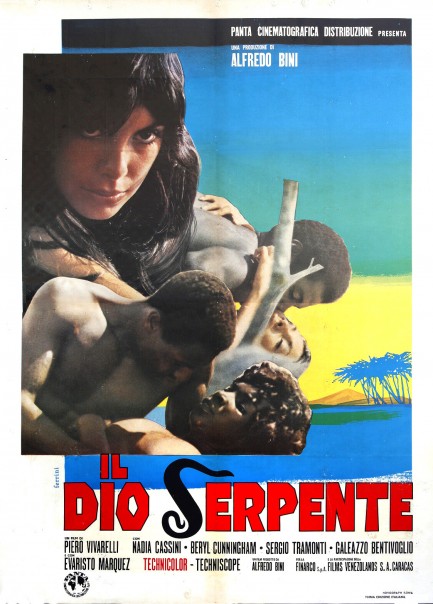
There's no erotica quite like 1970s sexploitation. With a focus on pure pleasure, fanciful plots, and a touristic approach toward lush locations, films from the genre are usually pretty fun to watch. Il dio serpente stars Nadia Cassini as a woman who moves to Colombia with her rich, older husband in order to spice up their relationship. She partakes of the regional beaches, the local shopping, and sights such as Cartagena's Castillo de San Luis de Bocachica, before being told by local friend Beryl Cunningham about the cult of a serpent deity named Djamballà, the god of love.
Cassini has little interest in island religion, but Djamballà has an interest in Cassini—at least that's what Cunningham tells her when Cassini says she was approached by a huge snake while on the beach. She begins to develop an interest in the cult after all, attends a voodoo style ritual presided over a by witch doctor, and ends up the star participant along with Cunningham. Cassini's husband then chooses that moment to fly away on business and leave her alone in paradise, which no right thinking man would do unless compelled by a script, and a lonely Cassini starts to get into those Djamballà rituals—and Djamballà inevitably gets into her.
Cassini is blazing hot and sensual as hell, so you can't blame the snake god for his fascination. The film's director Piero Vivarelli also knows he has someone special on his hands, and spends plenty of time in loving close-ups of his star, but in our opinion his direction is far too chaste for what's basically supposed to be a ninety-minute turn-on. In addition, the film seems padded, with its extended ritual drumming sequences. In the end, what you get is just another movie about island religion and a white girl cutting loose. We've seen versions of it before. If this one is worth watching at all, it's only because Cassini's rare beauty makes it thus. Il dio serpente premiered in Italy today in 1970.
 Moore than just another flash in the pan. 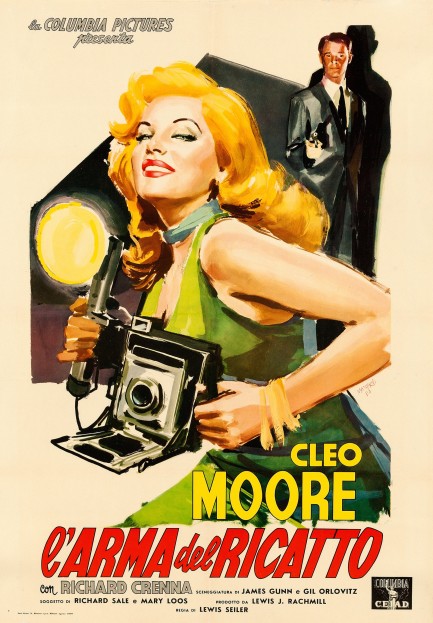
We've done a lot on b-movie femme fatale Cleo Moore. Above you see her getting a-level treatment on a stunning promo poster made in Italy for her 1956 hard luck drama Over-Exposed, which for its Italian run was called L'arma del ricatto, or “the weapon of blackmail.” This is a masterpiece. It was painted by Manfredo Acerbo, who also painted an iconic poster for Gilda we showed you a long while back. We've been neglectful in not digging up more from this guy. But we'll remedy that. There's no Italian release date for Over-Exposed, but it probably played there in mid-1957. You can read more about it here.
 Sixty-three years ago today Rita Hayworth electrified as the archetypal femme fatale. 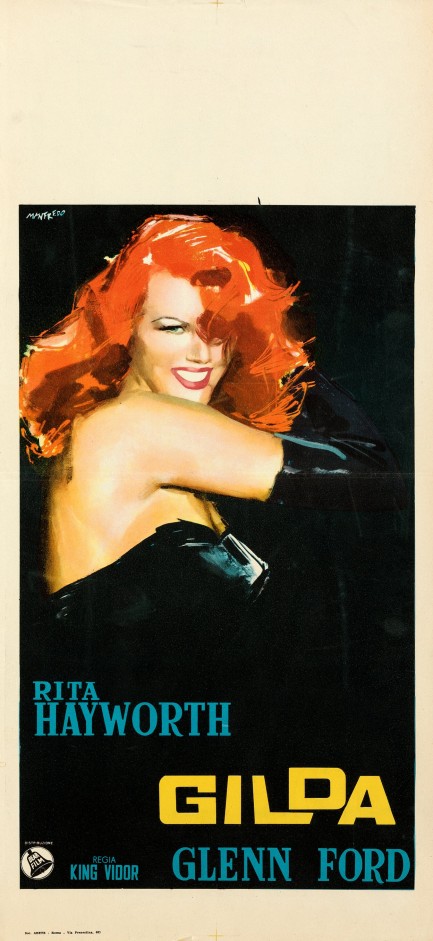
Gilda is a film that appears on every list of top ten noirs we’ve ever seen, and still it is impossible to overstate how great the movie is. Rita Hayworth had acted in more than a dozen features before this one, but she was a revelation here. Her husband steps into her bedroom saying, “Gilda, are you decent?” And she appears with a hairflip and a wicked smile, saying, “Me?” Right away you know you’re in for a ride. You know this is a woman who is never decent. Something about the blazing eyes seems to promise unimaginable carnal adventures. She stands backlit in a nearly sheer shirt that shows the silhouettes of her breasts. After a song and dance routine she allows a stranger onstage to try and zip her out of her strapless black dress. At one point, about to ride off into the night with a suitor, she says, “Haven’t you heard, Gabe? If I’d been a ranch they’d have named me the Bar Nothing.” All this just to drive poor Glenn Ford mad with jealousy. Yes, Gilda is a femme fatale for the ages, and Gilda is a must-see piece of American cinema.
.jpg) 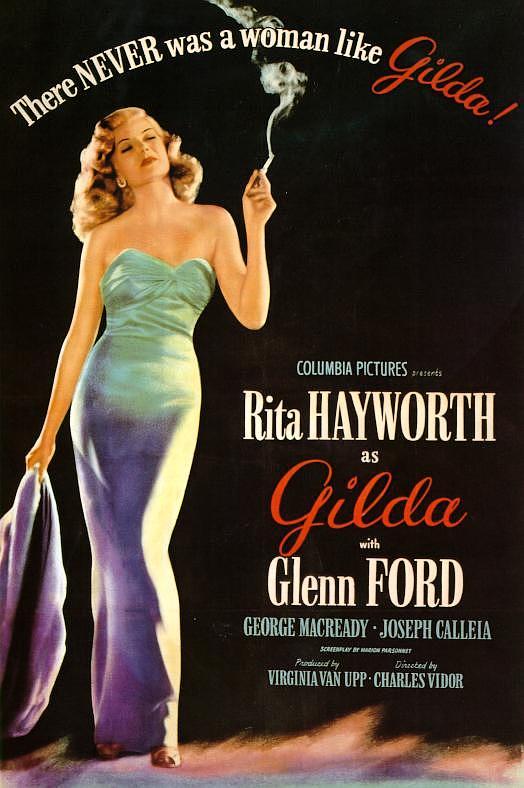
|
 |

The headlines that mattered yesteryear.
2003—Hope Dies
Film legend Bob Hope dies of pneumonia two months after celebrating his 100th birthday. 1945—Churchill Given the Sack
In spite of admiring Winston Churchill as a great wartime leader, Britons elect
Clement Attlee the nation's new prime minister in a sweeping victory for the Labour Party over the Conservatives. 1952—Evita Peron Dies
Eva Duarte de Peron, aka Evita, wife of the president of the Argentine Republic, dies from cancer at age 33. Evita had brought the working classes into a position of political power never witnessed before, but was hated by the nation's powerful military class. She is lain to rest in Milan, Italy in a secret grave under a nun's name, but is eventually returned to Argentina for reburial beside her husband in 1974. 1943—Mussolini Calls It Quits
Italian dictator Benito Mussolini steps down as head of the armed forces and the government. It soon becomes clear that Il Duce did not relinquish power voluntarily, but was forced to resign after former Fascist colleagues turned against him. He is later installed by Germany as leader of the Italian Social Republic in the north of the country, but is killed by partisans in 1945.
|

|
|

It's easy. We have an uploader that makes it a snap. Use it to submit your art, text, header, and subhead. Your post can be funny, serious, or anything in between, as long as it's vintage pulp. You'll get a byline and experience the fleeting pride of free authorship. We'll edit your post for typos, but the rest is up to you. Click here to give us your best shot.

|
|







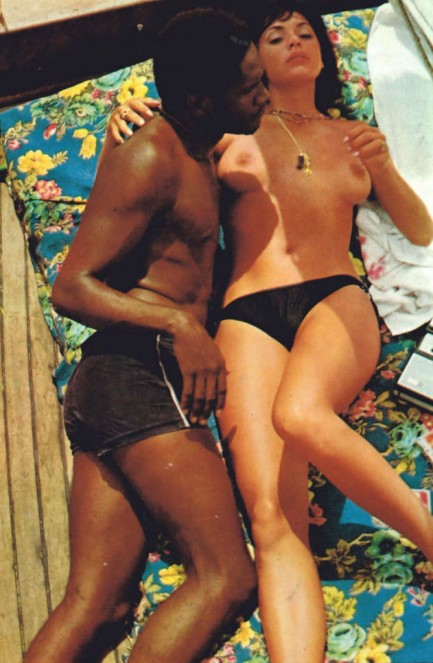


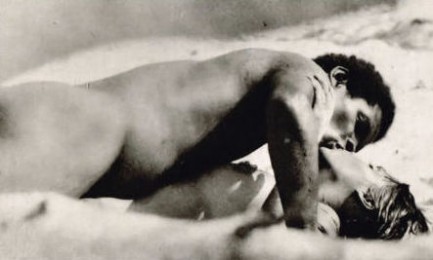

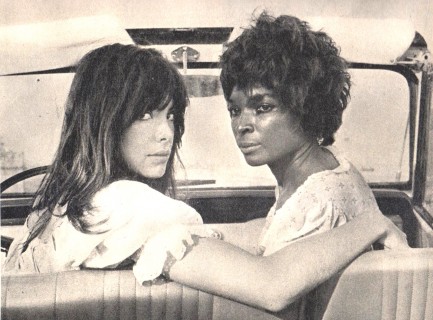
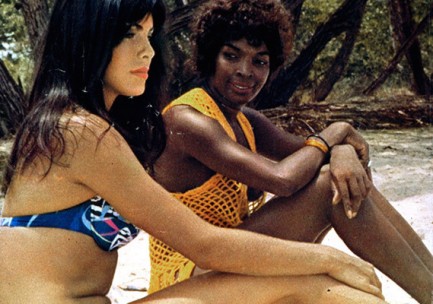

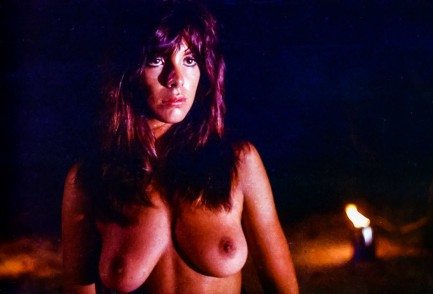






.jpg)





































































